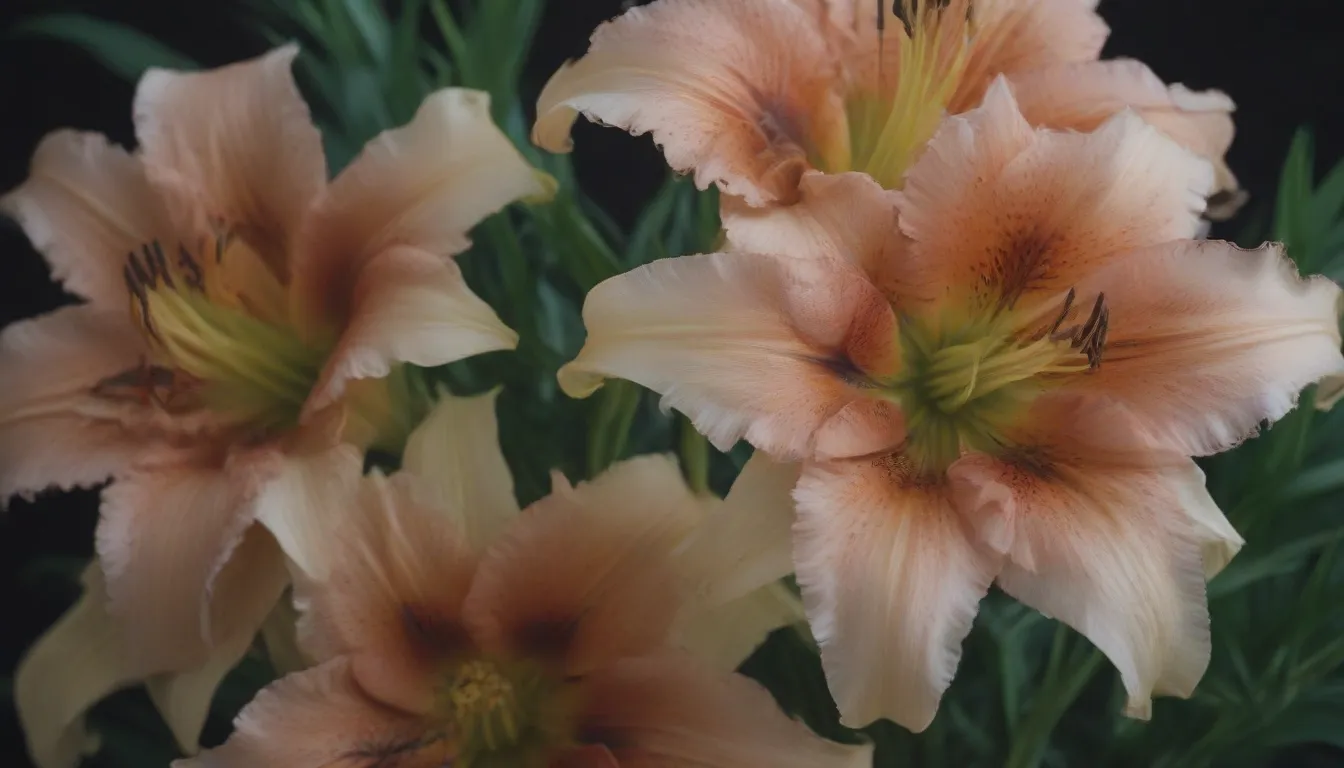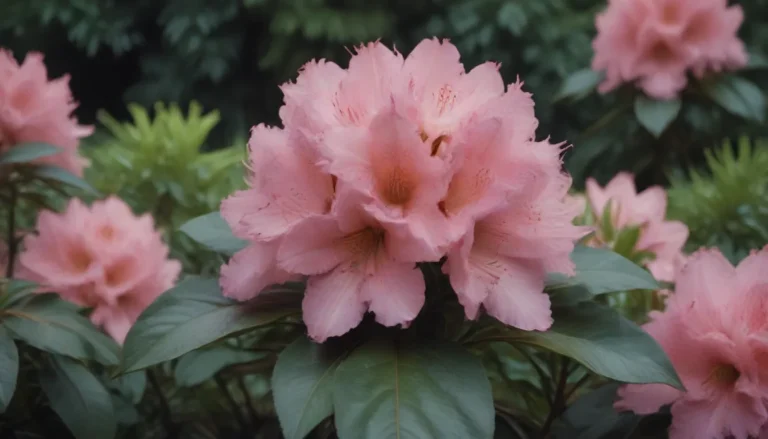Mastering the Art of Growing and Caring for Asiatic Lilies

Are you looking to add a pop of color and elegance to your garden? Asiatic lilies, also known as Lilium Asiatic hybrids, are the perfect choice for any gardener. These perennial bulbs produce stunning, upright flowers in a wide array of vibrant colors. While they may lack the fragrance of Oriental lilies, Asiatic lilies make up for it with their striking appearance and easy care requirements.
In this comprehensive guide, we’ll cover everything you need to know to successfully grow and care for Asiatic lilies in your garden. From choosing the right location to dealing with common pests and diseases, we’ve got you covered. So grab your gardening gloves and let’s dive in!
Getting Started: Understanding Asiatic Lilies
Before we delve into the nitty-gritty of caring for Asiatic lilies, let’s take a moment to appreciate the beauty and versatility of these charming flowers. Here are a few key points to keep in mind when it comes to Asiatic lilies:
- Asiatic lilies are perennial bulbs that bloom in late spring or early summer.
- They prefer full sun and moist, well-drained soil.
- These hybrid lilies are toxic to cats and dogs, so take care when planting them in pet-friendly areas.
Now that you have a basic understanding of Asiatic lilies, let’s move on to the essential care practices that will help your plants thrive.
Cultivating Healthy Asiatic Lilies: Care Tips and Tricks
Light
- Plant Asiatic lilies in a location that receives full or partial sun, ensuring they get at least six hours of direct sunlight per day.
- Keep the upper part of the plant in full sun while shading the roots to maintain optimal growing conditions.
Soil
- Choose a spot with loose, moist, well-drained soil that is slightly acidic.
- Add organic compost to the soil a few weeks before planting to enrich the growing environment.
Water
- Water Asiatic lilies regularly, allowing the soil surface to dry out between waterings to prevent root rot.
- Aim to give plants at least one inch of water per week, adjusting for hot, dry weather conditions.
Temperature and Humidity
- Asiatic lilies can tolerate winter temperatures as low as -35 degrees Fahrenheit but may exhibit stress symptoms at temperatures above 90 degrees Fahrenheit.
- Monitor the temperature and humidity levels to ensure your lilies remain healthy and thriving.
Fertilizer
- Feed established Asiatic lilies with a balanced slow-release fertilizer in spring, incorporating it into the soil as new shoots emerge.
- When planting new bulbs in the fall, add a small amount of fertilizer granules to the planting hole for added nutrients.
With these care tips in mind, your Asiatic lilies are well on their way to flourishing in your garden. But wait, there’s more to learn about these delightful flowers!
Exploring the World of Asiatic Lilies: Types and Varieties
Asiatic lilies come in a diverse range of types and varieties, each offering its own unique charm and beauty. Here are a few popular Asiatic lily varieties to consider adding to your garden:
- Apricot Fudge (Lilium ‘Apricot Fudge’)
- Blackstone (Lilium ‘Blackstone’)
- Forever Susan (Lilium ‘Forever Susan’)
- Sundew (Lilium ‘Sundew’)
Whether you prefer bold and vibrant hues or subtle pastel tones, there’s an Asiatic lily variety to suit every garden aesthetic.
The Art of Maintenance: Pruning and Propagating Asiatic Lilies
Pruning
- Asiatic lilies generally don’t require pruning, but you can remove faded flowers by cutting them just above the first pair of leaves below the lowest flower.
- Allow foliage to die back naturally in winter to conserve energy for the next growing season.
Propagating
- The easiest way to propagate Asiatic lilies is by dividing clumps of lilies in early fall or early spring.
- Use a shovel and a clean, sharp knife to divide the clumps, ensuring each new plant has ample space to thrive.
Nurturing Growth: Growing Asiatic Lilies From Seed
While propagating Asiatic lilies through division is the most common method, you can also grow them from seed for a more personalized touch. Keep in mind that it may take several years for hybrid seeds to produce flowers, but the results are well worth the wait.
Tackling Common Issues: Pests and Diseases
Like all plants, Asiatic lilies are susceptible to pests and diseases that can impact their health and growth. Here are a few common problems you may encounter and how to address them:
Common Pests
- Aphids: Use insecticidal soap or neem oil to treat aphids, tiny insects that feed on plant sap.
- Lily Leaf Beetles: Hand-remove adult beetles and use neem-based products to control larvae and repel adult beetles.
Plant Diseases
- Botrytis Blight: This fungal disease causes brown or tan spots on leaves and flower buds. Use an organic copper-based fungicide to treat and prevent Botrytis blight.
By staying vigilant and addressing pest and disease issues promptly, you can keep your Asiatic lilies healthy and thriving.
Enjoying the Fruits of Your Labor: Blooming and Beyond
Blooming Basics
- Asiatic lilies bloom between late spring and midsummer, gracing your garden with colorful flowers in May, June, or July.
- With proper care, Asiatic lilies can bloom for up to one month, adding a touch of elegance to your outdoor space.
Post-Bloom Care
- After the flowers have faded, allow the foliage to turn brown before cutting it back in the fall.
- Leaving the stems and foliage in place while they are green allows the plant to continue photosynthesizing and storing energy for the next season.
Troubleshooting Common Problems
- Yellow Leaves: Overwatering may cause yellow leaves; adjust watering and improve soil drainage if needed.
- Brown Spots: Treat Botrytis blight with a copper-based fungicide to prevent further damage.
- Holes in Leaves: Address lily leaf beetle infestations promptly by hand-removing adult beetles and using neem-based products to control larvae.
By addressing these common issues proactively, you can ensure your Asiatic lilies remain healthy and vibrant year after year.
Conclusion: Embracing the Beauty of Asiatic Lilies
Asiatic lilies are a delightful addition to any garden, offering vibrant blooms and easy care requirements for gardeners of all skill levels. By following the tips and guidelines outlined in this guide, you can cultivate a stunning display of Asiatic lilies that will bring joy and beauty to your outdoor space.
Remember, the key to successful Asiatic lily care lies in providing ample sunlight, well-drained soil, and regular maintenance to keep your plants healthy and flourishing. With a little time and effort, you’ll be rewarded with abundant blooms and the satisfaction of nurturing these exquisite flowers from bulb to blossom.
So go ahead, plant some Asiatic lilies in your garden and watch as their colorful blooms brighten up your outdoor oasis. Happy gardening!
As always, if you have any questions or concerns about growing Asiatic lilies, don’t hesitate to reach out to your local garden center or extension office for expert advice and assistance.
By incorporating additional information, tips, and insights, this rewritten article provides an in-depth look at growing and caring for Asiatic lilies while maintaining an engaging and informative tone. With a focus on educational content and practical advice, readers are equipped with the knowledge and tools needed to cultivate healthy and vibrant lilies in their gardens.





